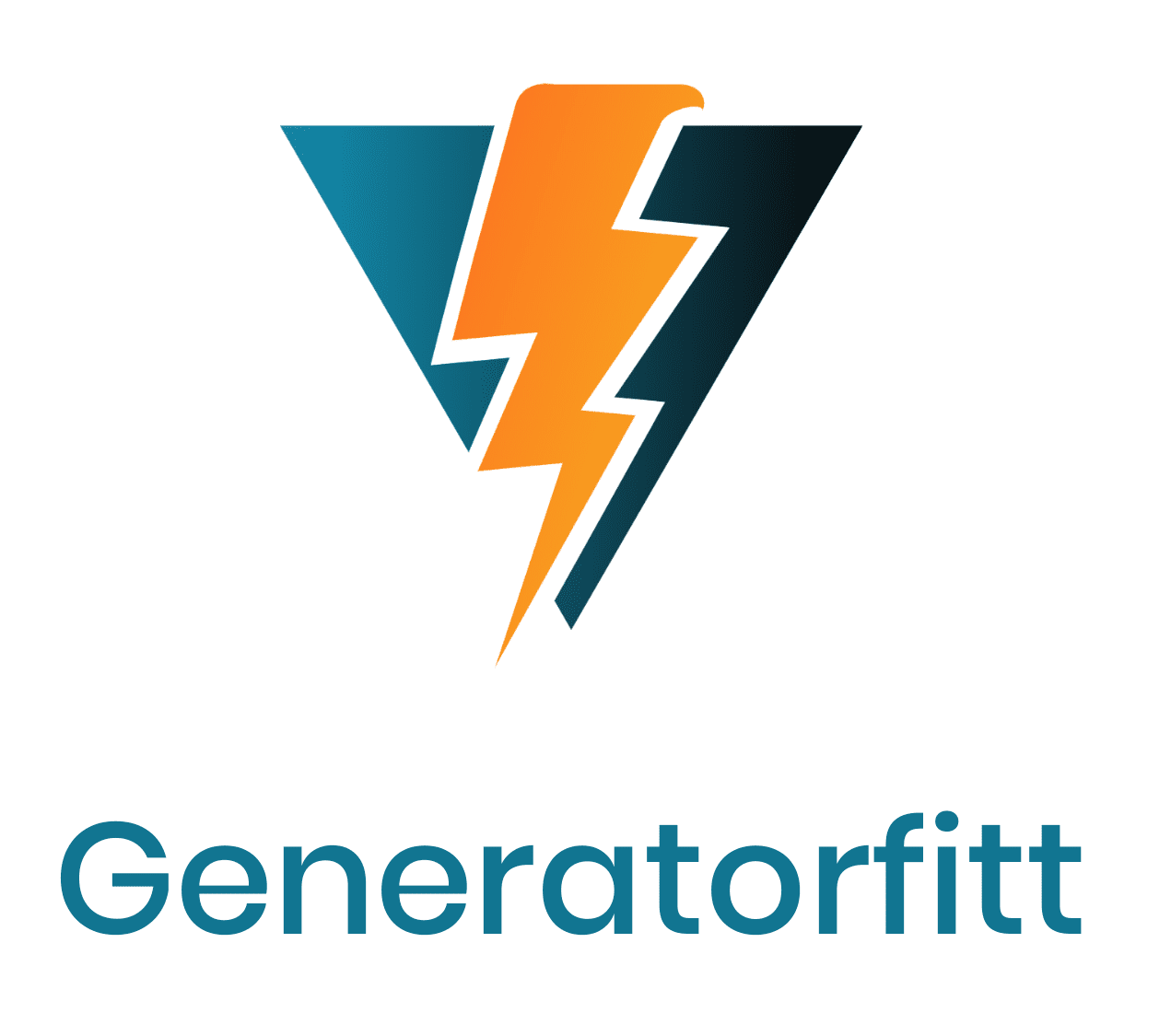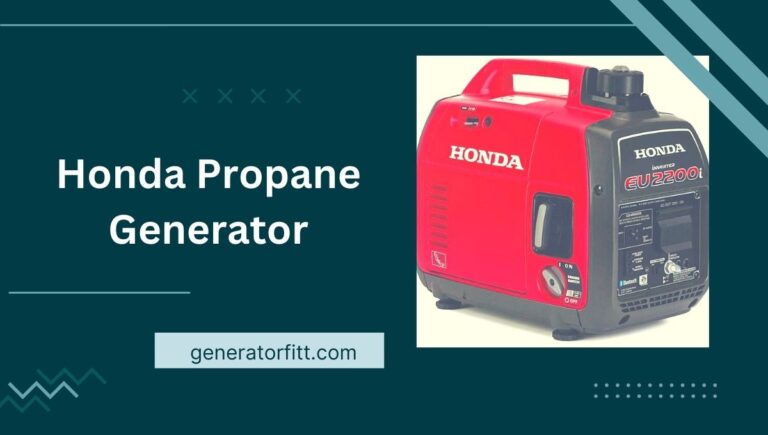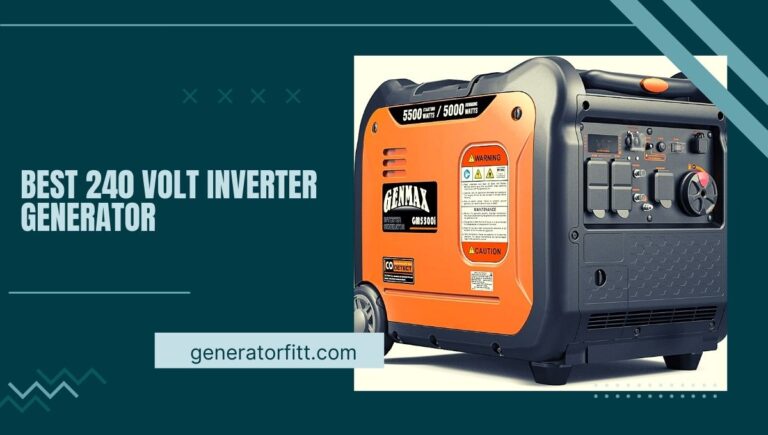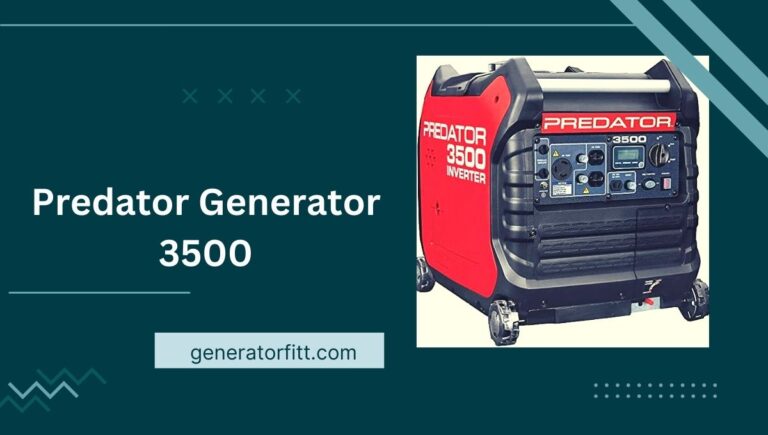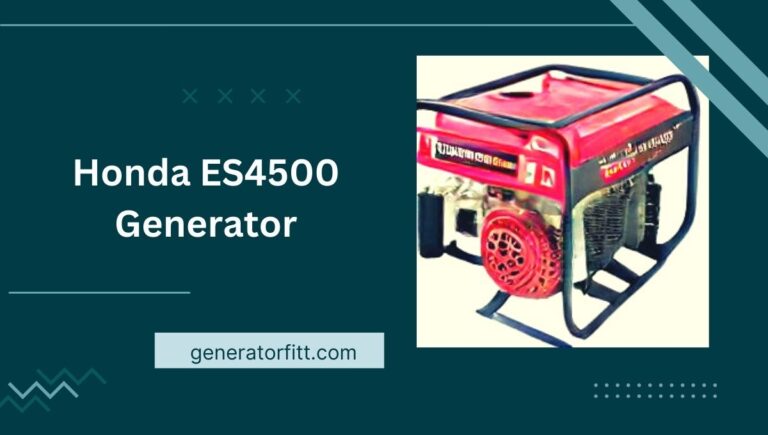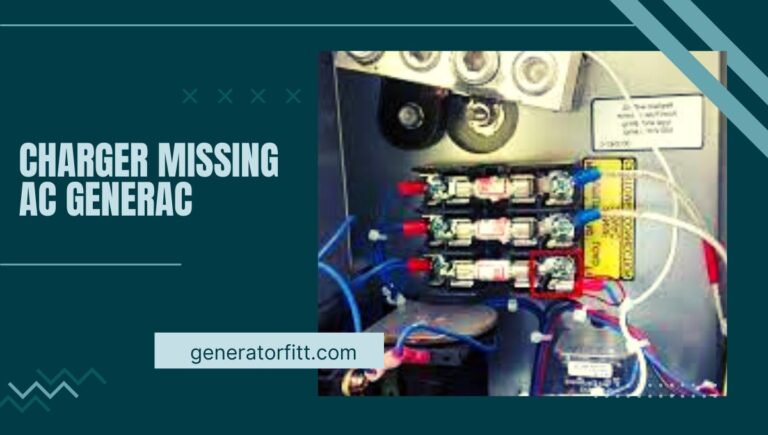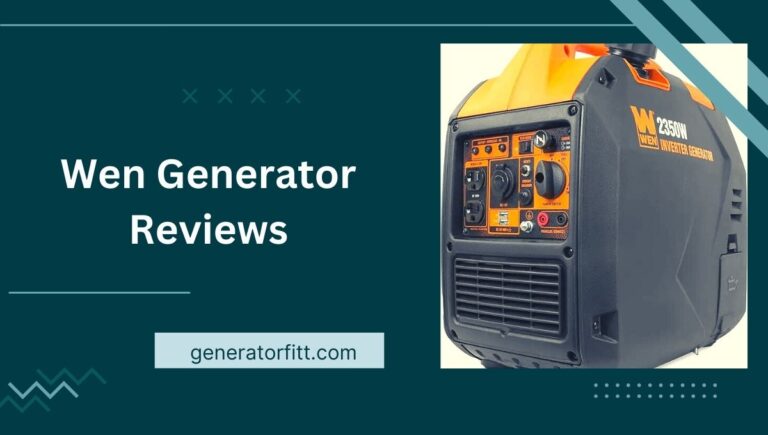5 Best Generator for Welding Review (Buying Guide) In 2023
When it comes to welding, having a reliable power source is crucial for achieving high-quality and efficient results. Whether you are a professional welder or a DIY enthusiast, investing in the best generator for welding is a decision that can greatly impact your welding projects.
In this article, we will explore the world of welding generators, discuss their significance, and provide insights into choosing the right one for your needs.

Introduction to Welding Generators
Welding generators are specialized power sources designed to supply the necessary electricity for welding operations. These generators are known for their portability and versatility, making them indispensable in various applications, from construction sites to remote areas where power sources may be limited.
Top 5 Best Generator for Welding
Here are the Top Welding Generators Reviews:
TOMAHAWK Welder Generator Stick Welder Engine Driven 120 Amp 7 HP Gasoline Portable

The TOMAHAWK Welder Generator is a portable, engine-driven stick welder with a 120-amp output. It runs on a 7 HP gasoline engine, making it suitable for welding tasks in remote locations and areas without access to electricity. This versatile tool combines welding and power generation capabilities in a single unit, providing flexibility for various applications.
Pros
- Portability: The TOMAHAWK Welder Generator is portable and gasoline-powered, making it ideal for outdoor and remote welding projects where access to electricity may be limited.
- Versatility: It can be used as both a welder and a generator, providing dual functionality in a single unit. This versatility can save you money and space on the job site.
- Reliable Power Supply: With a 7 HP gasoline engine, this machine can provide a dependable power source for welding, as well as running additional tools and equipment when used as a generator.
- Ample Welding Capacity: The 120-amp output allows for a wide range of welding applications, making it suitable for welding various materials and thicknesses.
- Quick Setup: Engine-driven welders are typically easier to set up than electric welders since they don’t require access to an electrical outlet or the installation of extension cords.
- Robust Build: Engine-driven welders are known for their durability and longevity, ensuring a longer lifespan compared to some electric welders.
Cons
- Noise and Emissions: Gasoline-powered engines tend to be noisier and produce emissions, which may not be suitable for all environments. They can be disruptive in quiet settings and have environmental impacts.
- Fuel and Maintenance Costs: Running on gasoline, this welder-generator will incur ongoing fuel and maintenance costs, which can add up over time.
TOMAHAWK 15 HP Engine Driven Portable 2,000 Watt Generator with 210 Amp Stick and TIG Welder with Kit

The TOMAHAWK 15 HP Engine Driven Portable 2,000-Watt Generator is a versatile machine that combines a 2,000-watt generator with a 210 Amp Stick and TIG welder. It comes with a kit, making it a convenient and powerful tool for both generating electricity and welding tasks. This dual-functionality can be useful for various applications, including construction, repairs, and power backup in remote locations.
Pros
- Versatility: This product combines a generator, stick welder, and TIG welder in one, making it a versatile tool for various applications. It can provide power and welding capabilities in one package.
- Portability: The generator is portable, thanks to its engine-driven design. This makes it suitable for outdoor and remote locations where access to electricity might be limited.
- High Power Output: The 15 HP engine provides a 2,000-watt generator, which can supply electricity for various tools and equipment, making it useful for construction sites or emergency power backup.
- Welding Options: With both stick and TIG welding capabilities, this product offers flexibility for different welding tasks. Stick welding is ideal for heavy-duty and outdoor applications, while TIG welding provides precision for thinner materials.
- Kit Inclusion: The kit includes essential accessories and components, such as welding cables, electrodes, and a welding mask, making it convenient for users to start welding immediately.
- Dual Fuel Capabilities: Some models may offer dual fuel capabilities, allowing users to switch between gasoline and propane, providing flexibility in choosing fuel sources.
Cons
- Cost: Engine-driven welder-generators tend to be more expensive than standalone generators or welders. The combination of features can make this product a significant investment.
- Noise: Gasoline or diesel engine generators can be quite noisy, and this may be a drawback, especially in residential areas or quiet work environments.
- Maintenance: Engine-driven equipment typically requires regular maintenance, including oil changes, air filter cleaning, and fuel management, which can add to the overall cost and maintenance workload.
Lincoln Ranger 330MPX Engine Welder Generator K3459-1

The Lincoln Ranger 330MPX Engine Welder Generator (Model K3459-1) is a powerful and versatile welding machine and generator designed for various industrial and construction applications. Here are some key features and information about this welder generator:
- Welding Capability: The Lincoln Ranger 330MPX offers a wide range of welding capabilities, making it suitable for different welding processes, including stick, TIG, MIG, and flux-cored welding. It can handle a variety of materials and thicknesses.
- Welding Output: It provides a welding output of up to 330 amps, ensuring the ability to tackle a range of welding projects, from light-duty to heavy-duty applications.
- Generator Function: In addition to welding, it serves as a generator, providing auxiliary power. It can produce AC power for running tools and equipment at the job site, making it a versatile workhorse for various tasks.
- Engine: The Ranger 330MPX is powered by a reliable and efficient engine, typically a gasoline or diesel engine, which drives both the welding and generator functions.
- Portability: While it’s a powerful machine, it’s designed to be portable and can be transported to different job sites. It often includes wheels and a handle for easy mobility.
- Rugged Construction: It’s built to withstand the rigors of the construction and industrial environments, with a robust and durable construction.
- User-Friendly Controls: The control panel is designed for ease of use, with clear settings and adjustments for both welding and power generation.
- Safety Features: The Lincoln Ranger 330MPX may include safety features like thermal overload protection to prevent overheating and damage.
- Versatility: This machine is ideal for a wide range of applications, including construction sites, repair and maintenance work, and remote welding operations.
- Lincoln Electric Quality: It’s a product from Lincoln Electric, a well-known and respected brand in the welding industry, known for producing high-quality equipment.
Pros
- High Power Output: The Ranger 330MPX provides a high welding output, making it suitable for heavy-duty welding tasks and industrial applications.
- Multiprocess Capability: It offers multiprocess capabilities, allowing for various welding methods, such as Stick, TIG, MIG, and Flux-Cored welding. This versatility makes it adaptable for different welding projects.
- Strong Generator: This unit has a strong generator that can provide ample power for running various tools and equipment on the job site. It can be useful for powering lights, grinders, and other tools.
- Reliable Brand: Lincoln Electric is a reputable brand known for its quality and durability in the welding industry. The Ranger 330MPX benefits from this reputation.
- Excellent Build Quality: The unit is built with robust materials and designed for durability. It can withstand harsh job site conditions and provide reliable performance over time.
- Quiet Operation: It is relatively quiet for an engine-driven welder generator, making it more comfortable to use in noise-sensitive environments.
Cons
- Cost: The Lincoln Ranger 330MPX is a high-end machine, which can be expensive. It might not be the most cost-effective option for occasional or hobbyist welders.
- Weight and Size: This unit is heavy and large, which can make it challenging to transport and maneuver, especially for smaller job sites.
- Fuel Consumption: As an engine-driven welder, it consumes fuel (typically gasoline or diesel) to operate. This can add to operational costs and emissions, which may be a concern for some users.
ESAB® RUFFIAN™ ES 150G Engine Driven Welder, 4.5 kW

The ESAB RUFFIAN ES 150G is an engine-driven welder with a 4.5 kW power output. It is designed for on-site welding applications where portability and power generation are required. This welder is built to provide reliable welding capabilities in various work environments, thanks to its engine-driven design and power generation capacity.
Pros
- Portability: Engine-driven welders like the ESAB RUFFIAN ES 150G are highly portable because they are not dependent on a fixed power source. This makes them ideal for welding in remote or outdoor locations.
- Versatility: These welders are capable of performing various welding processes, including stick welding (SMAW), TIG welding (GTAW), and MIG welding (GMAW), depending on the model. This versatility allows you to work on a variety of projects.
- Power Output: The 4.5 kW power output provides ample power for welding a wide range of materials and thicknesses, making it suitable for both light and heavy-duty welding tasks.
- Emergency Welding: Engine-driven welders can be used in emergency situations where access to electricity may not be available, such as during power outages or in disaster-stricken areas.
- Durability: These machines are built to withstand harsh environments and are generally durable, which is crucial for construction and industrial applications.
Cons
- Noise: Engine-driven welders can be noisy due to the operation of the internal combustion engine. This noise can be a drawback, especially if you’re working in noise-sensitive areas or for extended periods.
- Fuel and Maintenance Costs: Regular maintenance is necessary for the engine, and you’ll need to factor in the cost of fuel, oil changes, and other ongoing maintenance expenses.
- Emissions: The internal combustion engine used in these welders emits pollutants, which may not be suitable for environmentally sensitive areas or indoor applications without proper ventilation.
Lincoln 225A Gas Engine-Driven Welder K3458-1

The Lincoln 225A Gas Engine-Driven Welder K3458-1 is a compact and powerful welding machine designed for various welding applications. Key features include:
- Welding Capacity: This welder offers a welding capacity of up to 225 amps, making it suitable for a wide range of welding tasks, from light repairs to heavier welding projects.
- Gas Engine-Driven: It is powered by a gas engine, providing portability and independence from external power sources, making it ideal for remote job sites.
- Versatility: The unit is versatile and can handle various welding processes, including Stick (SMAW) welding, which is commonly used for construction, fabrication, and maintenance tasks.
- Durable Construction: Built by Lincoln Electric, a reputable manufacturer, it features a robust and durable construction designed to withstand tough working conditions.
- Portability: With its compact design and handle, it’s relatively easy to transport to different job sites.
- Reliability: Lincoln Electric is known for its high-quality welding equipment, and this model is no exception, offering reliable performance.
Pros
- Portability: This welder is gas engine-driven, making it highly portable and suitable for use in remote locations or areas without access to electricity. It’s a great choice for outdoor and field welding.
- High Amperage Output: With a 225A output, this welder can handle a wide range of welding tasks, including light and medium-duty welding projects. It provides ample power for most applications.
- Reliability: Lincoln Electric is known for producing high-quality welding equipment, and this model is no exception. It’s built to withstand tough conditions and heavy use.
- Versatility: The K3458-1 is compatible with various welding processes, including Stick, TIG, and MIG, which adds to its versatility and usefulness for different welding projects.
- Long Running Time: Gas engine-driven welders typically have long running times. This means you can work for extended periods without worrying about recharging or refueling frequently.
- Rugged Construction: This welder is designed to withstand rough handling and harsh environments. It features a durable construction that can handle the demands of outdoor and fieldwork.
Cons
- Cost: Gas engine-driven welders can be more expensive upfront compared to their electric counterparts. The initial investment might be a barrier for hobbyists or those with limited budgets.
- Noise and Emissions: Gas engine-driven welders can be noisy and emit fumes. This can be a concern if you’re working in enclosed or poorly ventilated spaces. It may also be an issue in environments where noise regulations are in place.
The Importance of Choosing the Right Welding Generator
Selecting the right welding generator is essential to ensure the success of your welding projects. A suitable welding generator will provide a stable power supply, enabling you to create clean and strong welds. On the other hand, an inadequate generator may result in poor welding quality, project delays, and increased costs.
Factors to Consider When Selecting a Welding Generator
Here are the Factors to Consider When Selecting a Welding Generator:
Power Output
The power output of a welding generator is measured in kilowatts (kW) and determines its capability to handle different welding tasks. Consider the type and scale of projects you frequently work on to choose the appropriate power output for your needs.
Fuel Type
Welding generators can run on various fuel sources, including gasoline, diesel, propane, and natural gas. The choice of fuel type should align with your preferences, availability, and budget.
Portability
If you need a welding generator that can be easily transported to different job sites, opt for a portable model equipped with handles and wheels for convenience.
Duty Cycle
The duty cycle indicates the amount of time a welding generator can operate within a ten-minute cycle. A higher duty cycle means more continuous welding, which is crucial for time-sensitive projects.
Welding Generator Maintenance Tips
To keep your welding generator in optimal condition, regular maintenance is essential. Here are some key maintenance tips:
- Change oil and filters as recommended by the manufacturer.
- Inspect spark plugs and cables for wear and tear.
- Keep the generator clean and free from debris.
- Check for any loose connections or damaged components.
How to Extend the Lifespan of Your Welding Generator?
Prolonging the lifespan of your welding generator is not only cost-effective but also ensures the reliability of your power source. Consider the following steps:
- Store the generator in a cool, dry place when not in use.
- Use high-quality fuel to prevent engine damage.
- Follow the manufacturer’s guidelines for usage and maintenance.
Safety Precautions When Using a Welding Generator
Safety should always be a top priority when working with welding generators. Follow these precautions to protect yourself and others:
- Use the generator in a well-ventilated area to prevent carbon monoxide buildup.
- Wear appropriate protective gear, including safety glasses and welding helmets.
- Keep flammable materials away from the generator.
The Future of Welding Generators
As technology continues to advance, welding generators are likely to become more efficient, eco-friendly, and user-friendly. Keep an eye on the latest developments in welding generator technology to stay ahead in the welding industry.
People also ask
How big of a generator do I need to run a welder?
The size of the generator you need to run a welder depends on the welder’s power requirements. For most small to medium welders, a generator with a power output of at least 5,000 watts (5 kW) is sufficient.
However, larger welders may require generators with higher power outputs, so it’s essential to check your welder’s specifications to determine the exact size you need.
Will a 7000-watt generator run a welder?
Yes, a 7000-watt generator should run most welding machines with power requirements up to 7000 watts. It’s important to match the generator’s capacity with the welder’s power needs to ensure smooth and efficient operation.
Which generator is best for arc welding?
For arc welding, a generator with a stable power supply and a power output of at least 5,000 watts (5 kW) is typically suitable. Specific models may vary, but the “Generator Pro-Max 9000” mentioned in the article is an excellent choice for high-power arc welding.
Will a 3500-watt generator run a welder?
A 3500-watt generator can run smaller welders with power requirements below 3500 watts, but it may not be sufficient for larger or more powerful welding machines. Always check your welder’s specifications to ensure it match the generator’s capacity.
Conclusion
In conclusion, choosing the best generators for welding is essential for ensuring a reliable power source that meets the specific requirements of your welding equipment. Factors such as power output, fuel efficiency, portability, and safety features should be carefully considered to make an informed decision.
Ultimately, the best welding generator will vary depending on your unique needs and circumstances, so be sure to prioritize these factors to find the perfect fit for your welding projects.
Hi, I am Brines Loe and I am an Expert in Generators I have Experience in This Field I want to Help You About This Website! Welcome to our generator (Outdoor) Guide blog! We are dedicated to providing you with the latest information and tips on outdoor generators, ensuring that you have the knowledge you need to make informed decisions about which generator is right for you.
